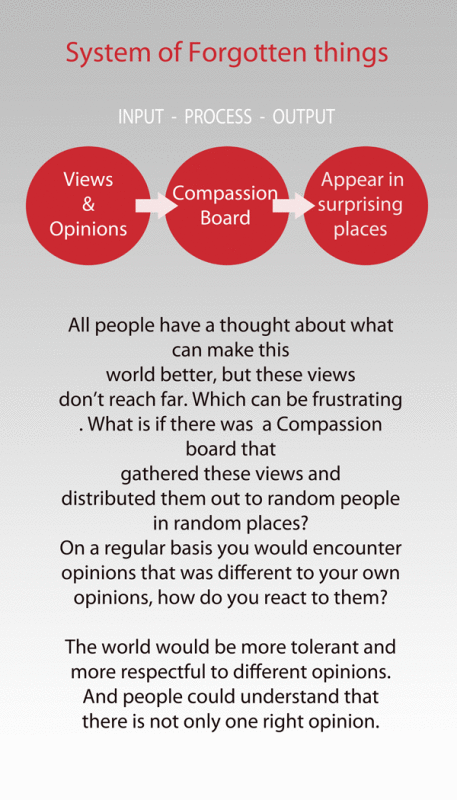Design as a Religious Practice
We as designers are constantly trying to create systems that changes peoples behaviour. I asked myself where can I learn more and found that religious movements are really successful at this. So my last year at Stanford I explored the techniques of cults and what people are searching for in their life that drives them to live in religious cults.
Alone Together
Is a piece that takes the participants on a journey of rites of passages, design thinking and loneliness. inspired by all the loneliness that individualism has created, I wanted people to be more aware of each others loneliness , as I believe that we are now seeking more and more connection to each-other and greater meanings of living. I see this as a trend that has lead to social networking, increase in small religious groups, where there is a belief in the individual as a part of the group, and a decrease in belief in traditional religions because where there is no space for the individual there.
Through a 3 step process, participants first defined what drives and motivates them in life. Section 2 made them sit down with a stranger or anyone and made them talk about the last time they felt alone, while the other made a little clay figurine that was inspired by the story they told. The third section made them place the figurine on a shelf, but the shelf could only contain four figurines, so participants was encouraged to use the trash bin underneath, either to throw their own or someone elses figurine in the bin.

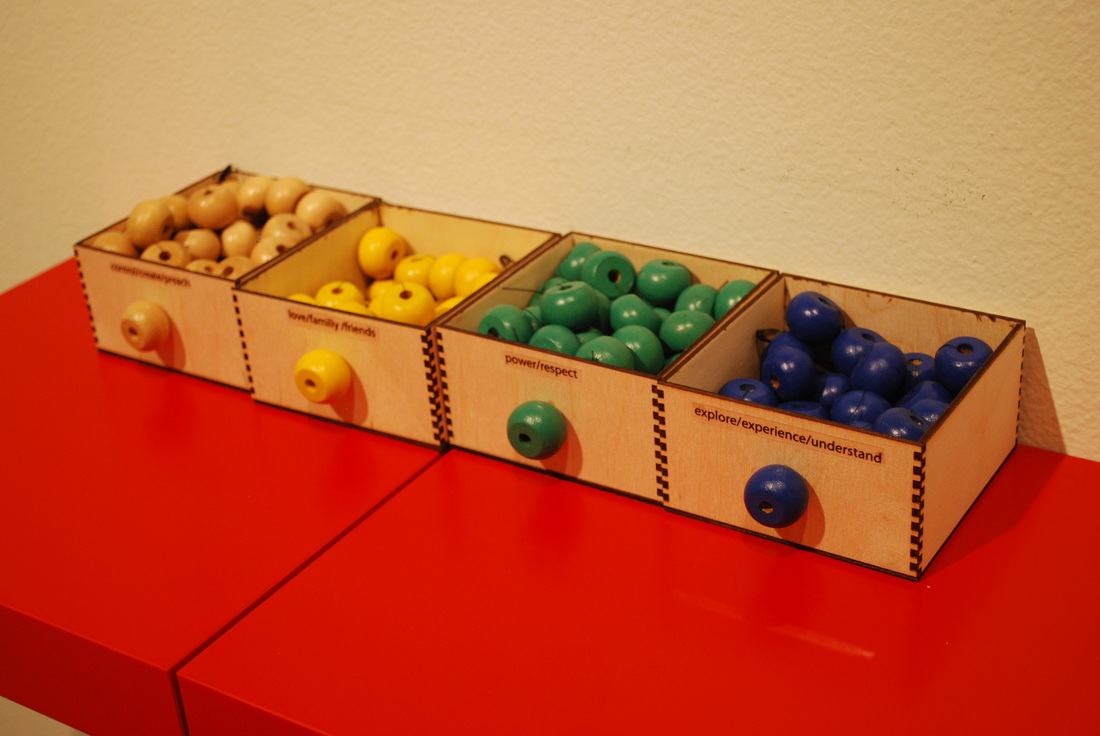
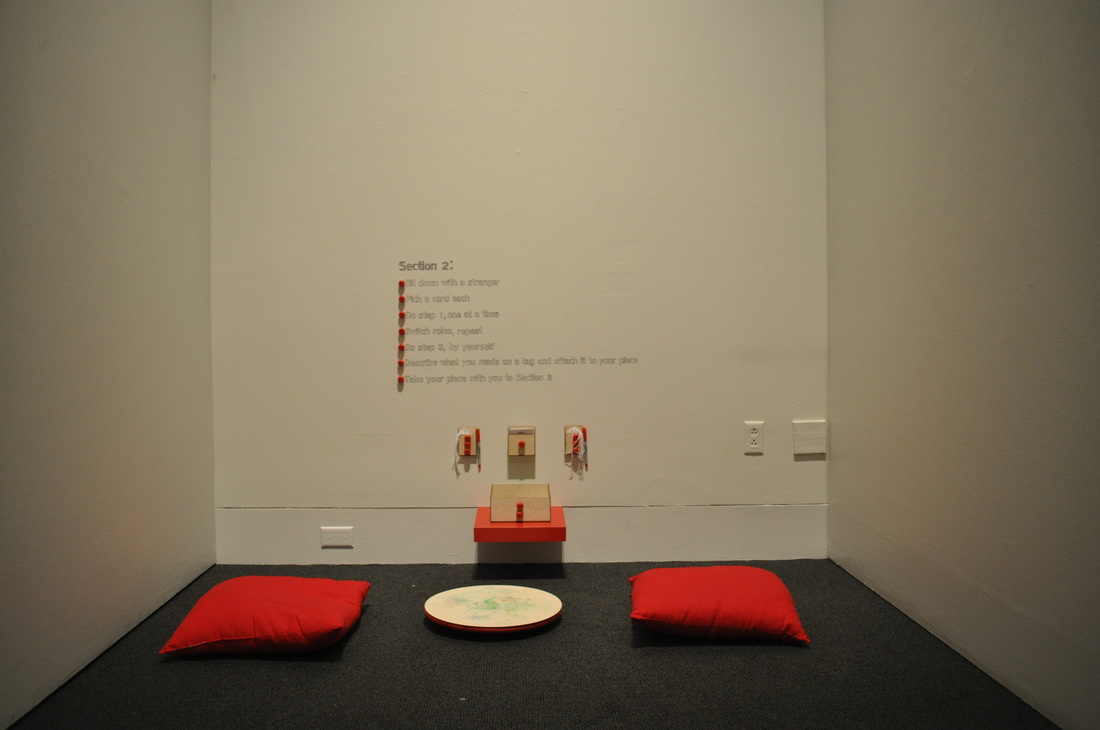
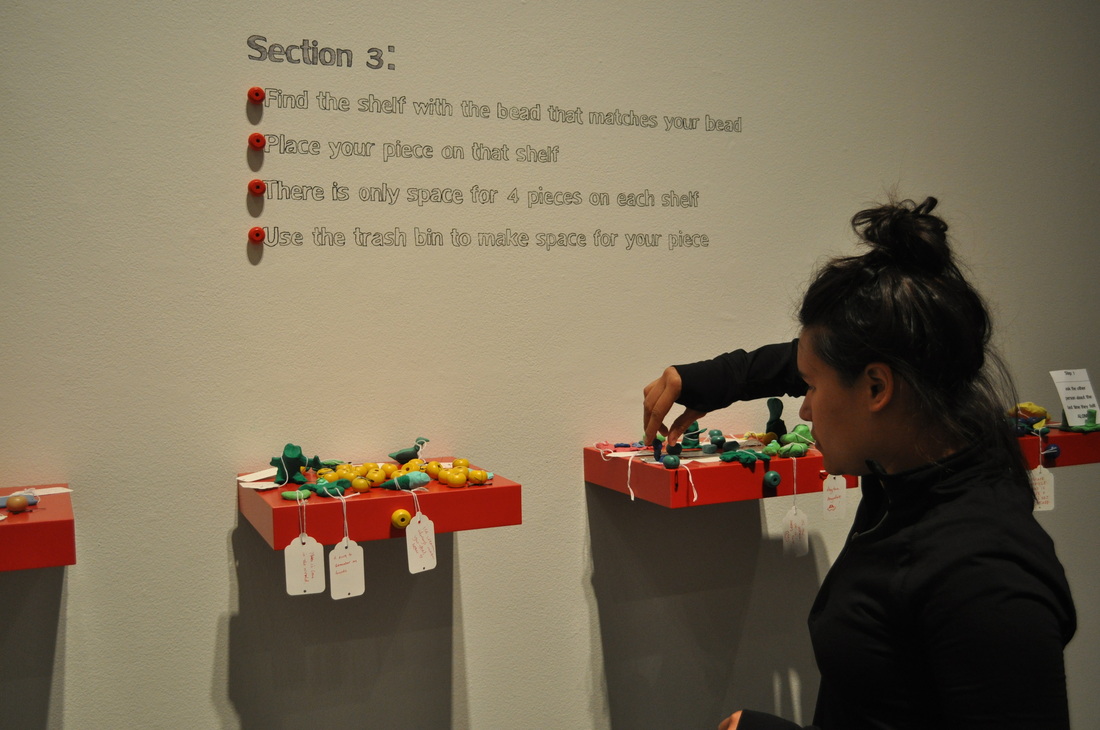
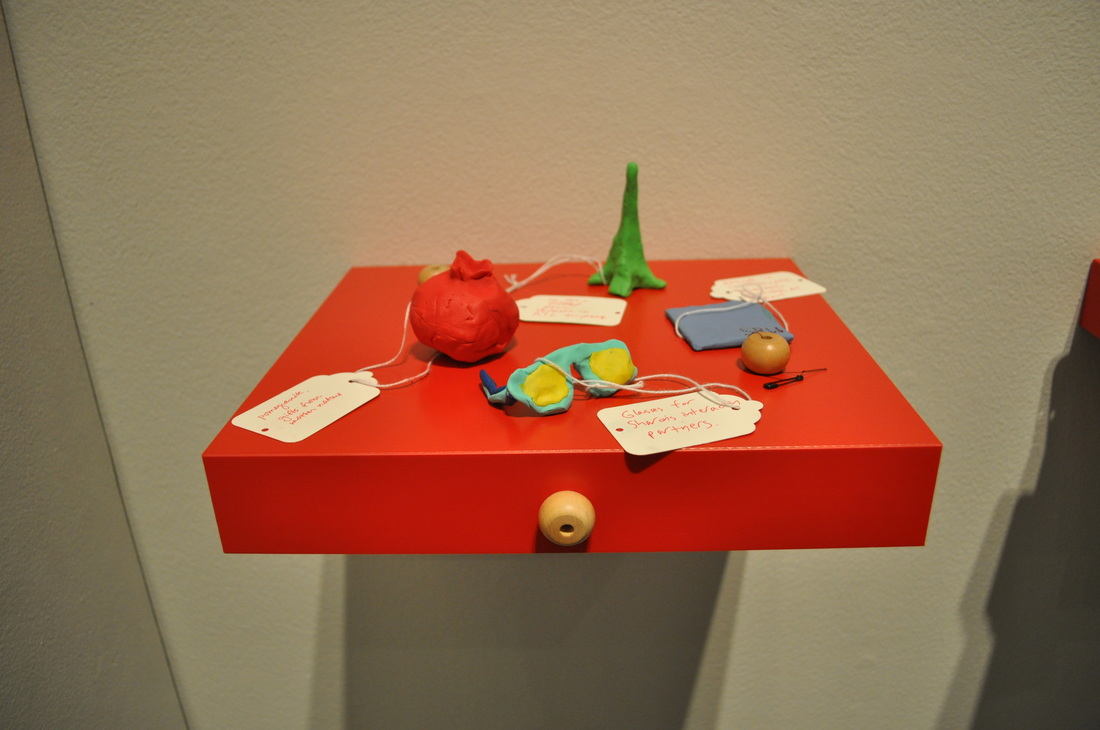

Madame H.P. Blavatsky:
Madame Blavatsky lived around the 1850's, it was a time where normal people had a hard time to was hard to distinguish super natural powers from the new technology and industrial inventions. This disillusion led to an increase in spiritual societies, where magic tricks as we call it today , was the way to talk to the spirits.
Madame was born in Russia and her history is unclear, but she lived in USA,Egypt, Europe and India . All places she was accused of fraud and therefor was "forced " to find a new market for her spirituality. The worst hit she got in India, where she founded the Theosophical Society in Adyar ,In 1884 Hodgson wrote a 200-page report, in which Blavastky was described as one of the most gifted , ingenious and interesting impostors in history.
Her society is still in flourishing all over the world, mainly in USA and India.
I created a spiritual room , where letters are "magically" moving around the room , the light is low and perfect for tricks, the smell of incense is strong and the photo of Madame is illuminating blue to represent her piercing blue eyes.
What I want to ask with this installation is what are we really believing in and how some people selectively ignore the truth of spiritual leaders, which are using the oldest tricks in the books, to create a market place for their services.
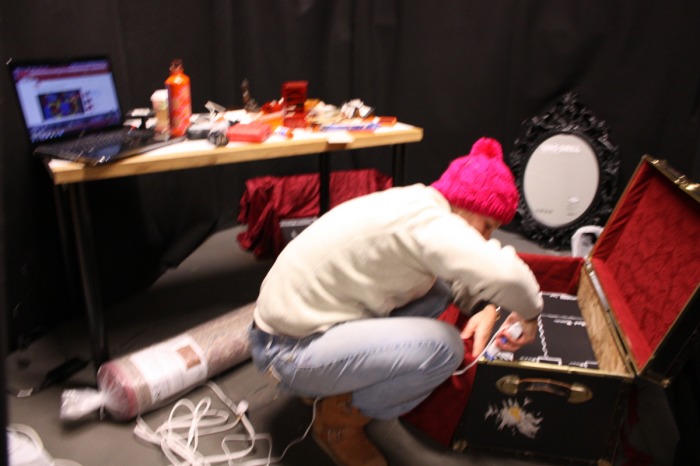

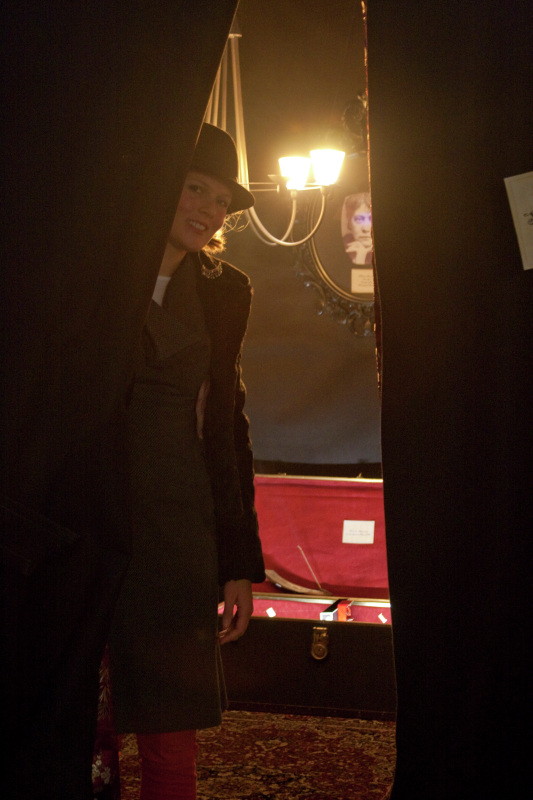
First Aid kit for disillusioned people
A lot of movements are questioning the society we are living in and wants to change people's perception of the world. But is this always that smart? Reading Ibsen’s" Vildanden" inspired me to question if always questioning and trying to move other peoples perception is a good thing , even though they are living on a lie. More harm can be done than good sometimes.
The First aid kit explains how to make a balloon and draw your illusions on the balloon , and then you as the "saviour" is going to burst that person's bubble by throwing a dart at the balloon. of course you might also hit the person and so hurt the person unnecessary, are you still willing to burst someone’s bubble? How far do you dear to go without risking the chance of hurting them?
The video is shot when I presented the first aid kit to my classmates, they were very eager to try, but grabbed an icebox lid to protect the person with the balloon on its head. That was not the purpose of the installation, since it takes away the tension, that should force the person that throws the dart to question what he is doing instead of fooling the game......
What would you do???

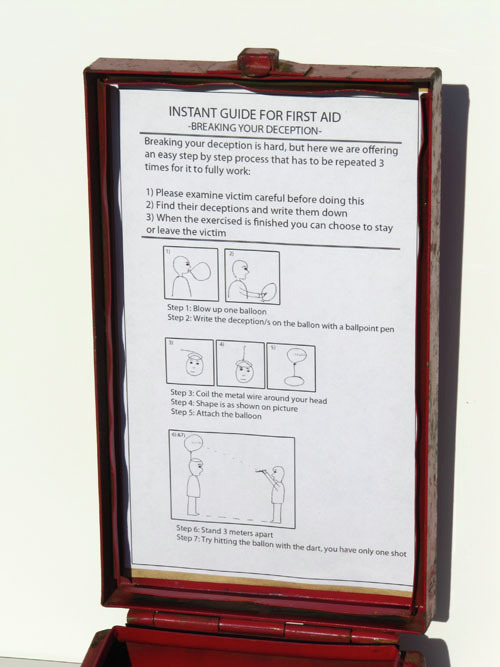
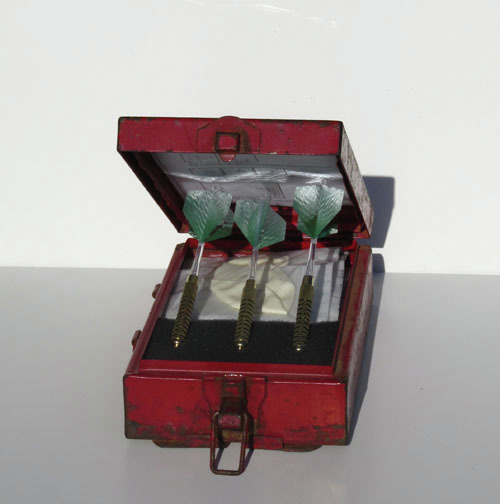

System of forgotten things
In a world were everyone is fighting for getting their opinion out, only the strongest and most powerful voices get theirs out. The problem with this is that important information, especially "Native" knowledge about the nature disappears or looses validity. But as we saw in the 2004 Tsunami, this knowledge should not be forgotten. There is a rumour that says the local gypsies had a saying that told them to seek refuge on the hills when the water disappeared. We have all seen photos of people playing on the shore in the amusement that the sea has disappeared. And when we understand how it dangerous that was, we see that we need this old knowledge to be part of our world today.
The system of Forgotten Things is a system that opens up for everyone to be able to get their opinion out to random people in random places. It works by sending your opinion to a Compassion Board, which highest goal is that they are driven by Love. They then place these opinions in random places all over our society and in all different forms.
When the receiver gets one of these opinions, they should try to understand it, but not necessary accept it. Since opinions and views are usually confined to your network, this way opinions and views of all kind can be spread anywhere. The goal is not for the receiver to accept everything, but for the receiver to understand that there is no right or wrong opinions and can there for create a better understanding of cases from a broader set of views.
The object from this world is an incident that happened in fine restaurant in San Francisco two days ago, when the bottle of wine was poured a string of letters poured out , saying "Remember the Knowledge of the Natives". it created a big fuzz and the Newspaper wrote a long article about the the day after. Focusing on how the Native knowledge is disappearing, as we believe that Technology is all that can save us.
Below you can see the exhibition as well as me testing out the different tools the Compassion Board is using.
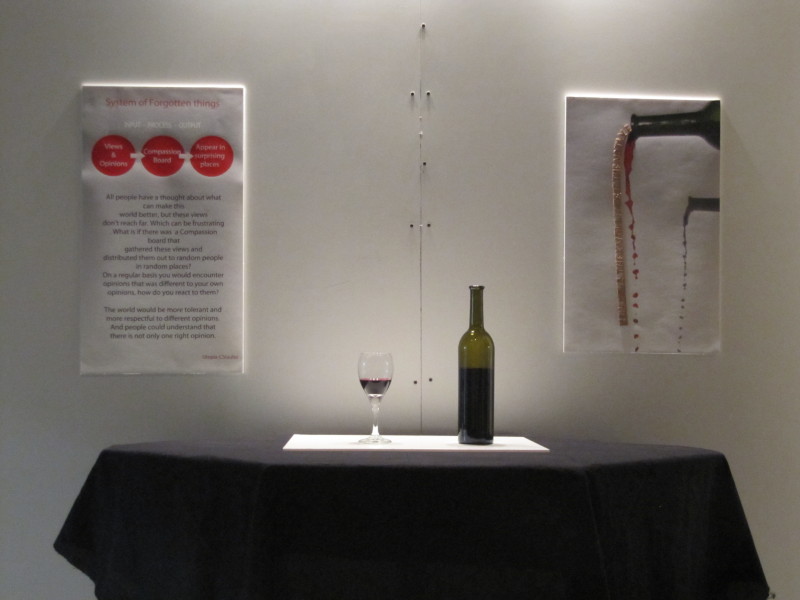
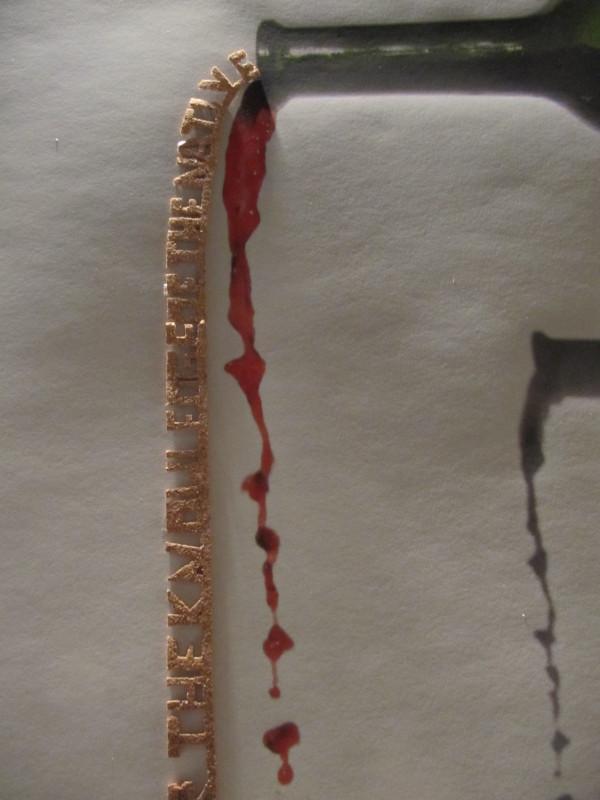

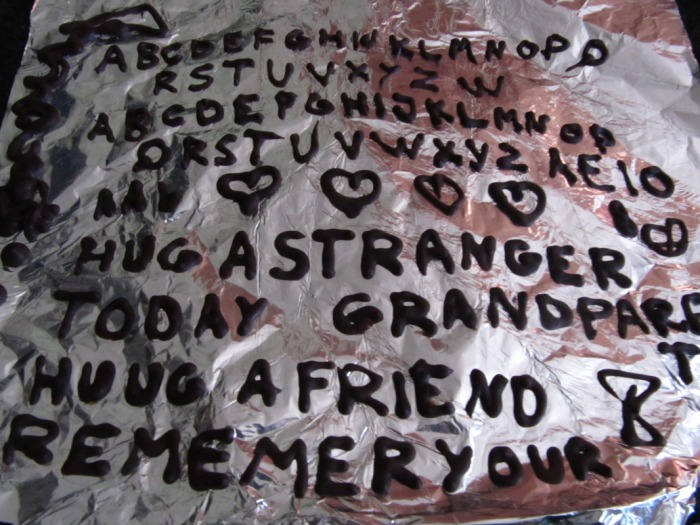

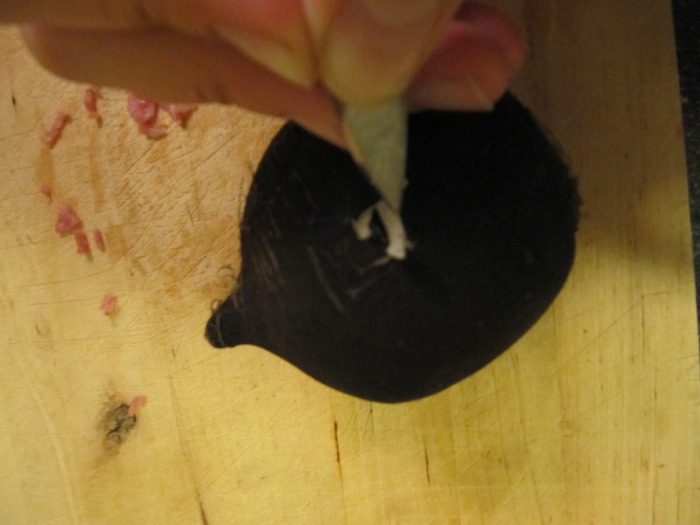

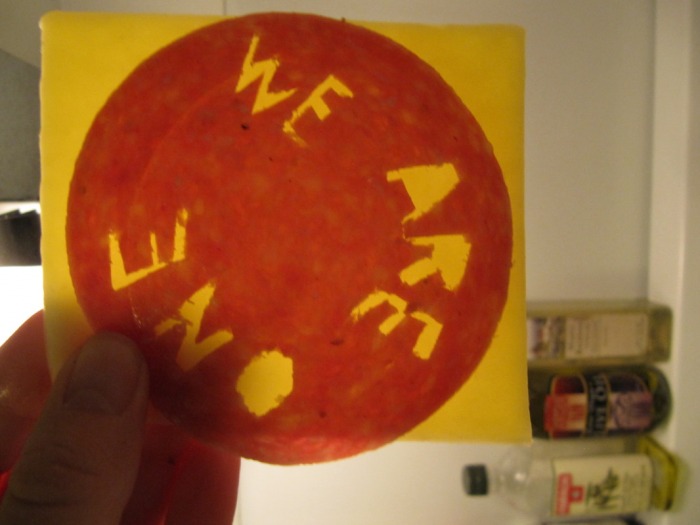
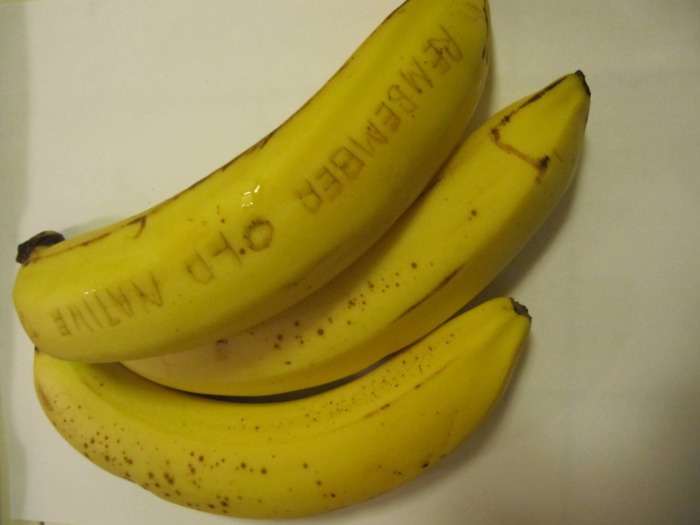
Calming Technology Lab Stanford
Spring 2011 I did a course at Stanford at the Persuasive technology Lab under BJ Fogg( bjfogg.com). We explored how we can change behaviour by using the smallest change possible and still have an effect. Our topic was calming behaviour. Over a 10 week period I created 4 different experiments and got 45 people to participate. I started with focusing on yoga practitioners at Avalon Yoga studio, as I assumed they would have more incentives and also know how to be calm. But I found out that the motivation is not a critical for behaviour change as changing the mindset of an already existing behaviour. I also found out that depending on the different type of behaviour you want to enhance you have to be careful with the type of technology platform you are using. If you are wanting a change in awareness, Facebook is a bad technology platform to use, as Facebook creates a "comparison"-awareness and not an awareness that calms you down. All the projects was made through already existing technology platforms, to quickly test them, and they never lasted more than 5days each.
Please see more here:
http://smallviewsbigworld.blogspot.com/2011/05/welcome-to-small-views-in-big-world.html
http://www.slideshare.net/ChristinStaubo/presentatiion-social-calm-cstaubo-8207489
http://cs377t.posterous.com/



